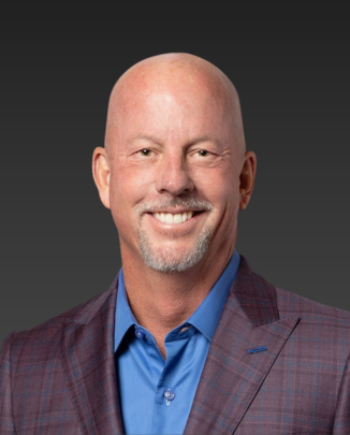
“Life is short. Time is limited. We should not be investing our energies in any initiative until we really believe that it’s going to lead to some gain in the mission you are living for.” Dr. Arif Nazir
When Dr. Arif Nazir, Chief Medical Officer at Signature HealthCARE, uttered these simple yet profound truths at the end of our podcast session as his closing statement, I was impressed by his deep commitment and sincerity to provide quality health care to his patients.
Value-based health care has been the major subject in healthcare for several years now. You’ve seen and heard many patient-centered initiatives from different health care facilities. You’ve seen some medical professionals embrace it with gusto while others take their time to transition.
While there were positive changes, the climb to where we envision the country’s healthcare system to be is a steep one. Years of being in the fee-for-service culture have made it challenging for many of our healthcare professionals and organizations to adjust to the value-driven care system.
Dr. Nazir has given four major key points which when properly applied to your practice or healthcare facility, can bring about the much-needed results towards providing value-based health care.
Value in health care can mean different things from different perspectives. Manufacturers, distributors, providers — all these various stakeholders have their own ideas on what value should be and how it should be measured. The most important consideration and measurement should be what matters most to the ultimate consumers — the patients.
With patients already suffering physically and financially, what can you do? Before you delve deep into what you can do, you first have to discover why you need to do it.
Simon Sinek, a motivational speaker, and organizational consultant, once said: “If we want to feel an undying passion for our work, if we want to feel we are contributing to something bigger than ourselves, we all need to know our WHY.”
As a doctor, find the reason why you do the things you do. Some of the questions you can ask yourself are:
Discovering the answer to these questions will help you to view things from the patient’s perspective, which can be a game-changer in your medical practice.
Find out what your organization is doing to elevate the value of health-care in your facility. Are plans being made? What steps are being implemented?
If your organization is just embracing the change, maybe Dr. Nazir’ short story about Signature HealthCARE will inspire you to want to improve and do better.
According to Dr. Nazir, Signature HealthCARE is the largest organization in the country where facilities are Eden Alternative certified. This means their facilities have more of the homestyle appeal and ambiance. Their facilities don’t feel like an institution.
I can only imagine how patients respond to being in such a facility. After years of visiting and often being confined within white four-corner walls, it can be a wonderful change to see porches, courtyards, and walking paths.
Dr. Nazir also mentioned that Signature HealthCARE is the only organization that believes in doing the yearly Senior Olympics where the residents get the opportunity to cheer, participate in the events, really compete, and show talents. He has seen the benefits of doing this event in residents and patients engagement as well as in the overall quality of life of the patients.
This is a revolutionary approach which has really elevated the life of patients and set a high bar of value-based care.
As you and your organization continue to transition to a patient-centered approach, there will be mistakes. There will be setbacks.
In Dr. Nazir’s case, it was the day a patient’s son came to him in a meeting. The son was livid about the care the father received.
He told Dr. Nazir that he didn’t care about the health facility’s five-star rating. The son said that from his perspective, the cure the doctor provided is worse than the local restaurant.
Initially, he didn’t understand what the patient’s son meant. It took a few days for him to realize that what the son was telling him was that patients have a different perspective on what healthcare is.
Dr. Nazir goes on to mention that in the facility he worked before, there was a big board where there were dozens and dozens of great cards and thank you notes from patients. These notes were addressed to the dietary person, the housekeeping people, the frontline healthcare team.
He then goes on to say that his name was not even once mentioned on that huge board.
That was when he realized how blind he was in regards to the perspective of patients and their families. The patients didn’t’ care about the blood pressure medicine he gave, nor about the heart treatment he provided.
The patients felt more cared for by the frontline healthcare team – people who patients felt cared for them while they were in the facility.
For patients, the measure of quality healthcare is when the patients are happy and satisfied with the service provided.
After that experience, Dr. Nazir became an advocate for person-centered care, which started him on a new phase as a physician leader.
If you are a physician leader, do you have a clear idea of what you’re supposed to be doing on a day-to-day basis?
Dr. Nazir observed that one of the reasons for burnout is they have no mandate on what they should really be doing and no way to measure what the leaders are doing to improve the healthcare in the facility. This leads to dissatisfaction and many doctors have lost their vision.
What can we learn from this? As physician leaders, you need to understand how to best help your patients.
At the same time, you should also know how to manage the healthcare team to push them forward to embracing the patient-centered approach.
You need to create new organizational structures, performance goals, new actionable policies which can be measured.
You need to be able to improve value and lower cost without risking the financial future of your facility.
The transition to value-based care is not easy. There are so many things to be done.
For now, the most important thing is you get started. Find your vision. Take one day at a time.
Listen to the full interview with Dr. Arif Nazir on the Outcomes Rocket Podcast.
According to the 2020 Centers for Disease Control and Prevention report, roughly 34.2 million Americans have diabetes,...
Read MoreAs a farmer, Rod was used to long days. He worked 18 hours a day, 7 days...
Read MoreWith investors receiving hundreds of pitch decks every year, how do you create a compelling presentation that...
Read More
Brittany Busse Co-Founder, President, and Chief Medical Officer at
ViTelHealth


Stephen Thorne Founder and CEO at
Pacific Dental Services

Keith Carlson Nurse Career Coach